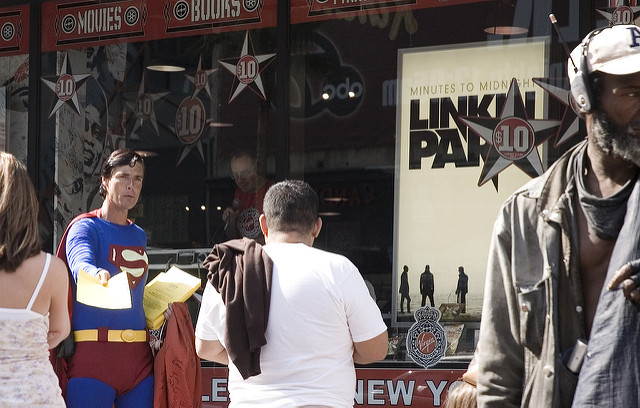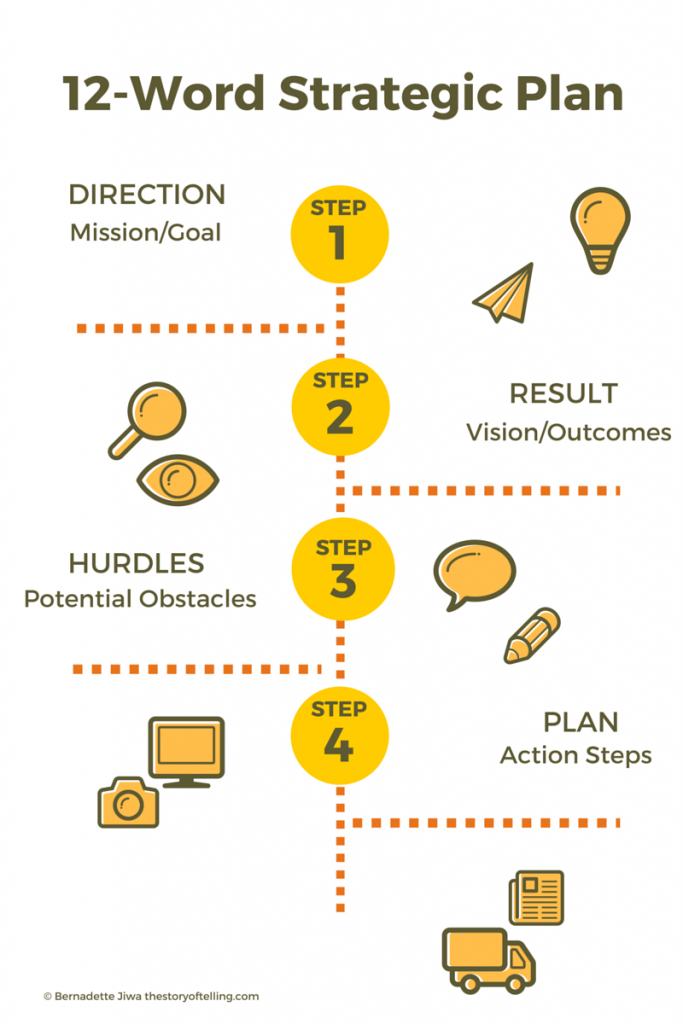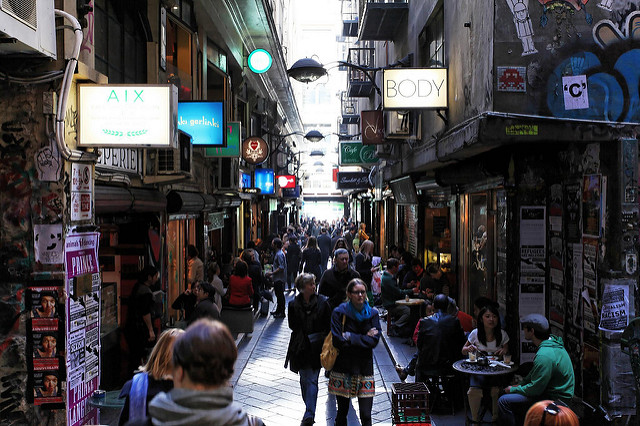Unlock the Magic in Your Story Now
Get the Free 20 questions to Ask Before Launching Your Idea workbook when you sign up for occasional updates.
Get the Free 20 questions to Ask Before Launching Your Idea workbook when you sign up for occasional updates.
Articles filed in: Strategy
The Difference Between Average And Exceptional
 The service at the restaurant is only as good as the investment the manager makes in staff training.
The service at the restaurant is only as good as the investment the manager makes in staff training.
The quality of the website’s user experience is a reflection of how many hours the developer spends testing and tweaking.
The hours of research the journalist conducts before writing a single word shines through in the genius of the article.
We tend to focus the majority of our thinking on the moment of the performance, forgetting that it’s the work we do leading up to it that makes all the difference. The things we do when the customer isn’t looking is what creates moments of delight.
What differentiates the average from the exceptional is not performance, it’s preparation.
Image by Hernán Piñera.
Everything To Everyone
 While I was consulting with a client last week we got talking about people who had built powerful personal brands and the reasons for their success. When we stopped at one in particular, her reaction was immediate.
While I was consulting with a client last week we got talking about people who had built powerful personal brands and the reasons for their success. When we stopped at one in particular, her reaction was immediate.
“I don’t like him.” she said, as her nose wrinkled.
Of course, she has never met this person, but that doesn’t mean that she hasn’t formed a strong opinion about his values, ethics, and intentions.
It’s tempting to believe that success, influence or impact means winning over everyone. It doesn’t.
You can never know who everyone is and what everyone thinks, but you can know what your right people care about and want to align themselves with.
Don’t aim to be everything to everyone. Aim to be something to someone.
Image by Pabak Sarkar
The First Rule Of Increasing Brand Awareness
 Sustainable growth is the goal of every business and conventional wisdom tells us that in order to grow we need to command more attention. Ironically, when we begin thinking about how to increase brand awareness we often shift our gaze internally.
Sustainable growth is the goal of every business and conventional wisdom tells us that in order to grow we need to command more attention. Ironically, when we begin thinking about how to increase brand awareness we often shift our gaze internally.
We work on differentiating from our competitors. We articulate whatever we believe our edge to be. We get just a little louder, all the while forgetting that if we want people to notice us we need to get better at noticing them first.
The first rule of increasing brand awareness is to improve your customer awareness.
What three things could you do today that will help you do that?
Image by Ashley Ringrose.
The 12-Word Strategic Plan
filed in Innovation, Strategy
 Have you ever found it difficult to plan, communicate or execute on a project, idea or strategy?
Have you ever found it difficult to plan, communicate or execute on a project, idea or strategy?
This 12-word framework will help you to get clear on where you’re headed and why—enabling you to lead yourself or your team and achieve your objectives.
It works for projects big and small, both personal and professional.

Use this version of Dollar Shave Club’s strategic plan that I created using the framework as a guide.
Dollar Shave Club’s 12-Word Strategic Plan*
DIRECTION
Mission/Goal
Become the largest online brand for personal care consumer packaged goods.
RESULT
Vision/Outcomes
Total domination of the global subscription razor market.
Create a world-class lifestyle brand.
Capture 15% of the U.S. razor market from incumbent brands within three years.
HURDLES
Potential Obstacles
Customer aquisition.
Beard boom.
Supply chain.
Not enough funding to scale.
Quality control.
Distribution.
Costs.
Scaling fast enough to keep up with demand.
PLAN
Action Steps
Online launch of direct to the consumer razor brand.
Subscription model.
Quality product and transparent pricing married with convenience.
Data collection.
Direct relationship with the consumer.
Referral reward program.
Product range expansion.
Expansion into key international territories.
Strategic partnerships.
Seek investors.
*[For illustration purposes—not from the company. More on the Dollar Shave Club success story.]
Download the 12-Word Strategic Plan .
Image by Luca Rosatto.
How We Drive Change
 When we want to improve our diet we monitor what we eat and how much we exercise. When we want to change a toddler’s behaviour we look for opportunities to praise the good, instead of constantly shouting down the bad. We measure and reward the behaviour we want.
When we want to improve our diet we monitor what we eat and how much we exercise. When we want to change a toddler’s behaviour we look for opportunities to praise the good, instead of constantly shouting down the bad. We measure and reward the behaviour we want.
In organisations, the things we measure and reward get, prioritised, managed and done. Not surprisingly when bonuses are paid to employees for closing deals and improving the single bottom line, that’s the thing they will make most effort to change.
We can talk to our teams until we’re blue in the face about the need to improve customer service or the importance of innovation to long-term success, but if we’re not monitoring, measuring and rewarding this behaviour we’re unlikely to see as much of it as we’d like.
If you want to improve customer engagement, measure and acknowledge customer delight. If you want to be more progressive, measure and recognise initiative. Change doesn’t start where we expect it to happen. It starts at the place where it’s lead.
Image by roujo.
A Reason To Come
 “Hey! Are you after some lunch?” asked the young woman on the pavement waving flyers during the 1 pm rush. She gestured to a place on the side street as she tried to lure people down it with the promise of a discount.
“Hey! Are you after some lunch?” asked the young woman on the pavement waving flyers during the 1 pm rush. She gestured to a place on the side street as she tried to lure people down it with the promise of a discount.
Most diners who eat at a restaurant down a side street go there on purpose. They’ve heard about it from a friend or a guide book. Side streets are for the kind of place that doesn’t need flyers or cajoling to get people to visit. Side street businesses give people a good reason to be there.
Every business has a choice. We can build for the main street where we have the chance of being accidentally discovered, or we can build for the side street and give people a reason to come.
Are you hoping to be discovered or giving people a reason to come?
Image by Charles Van den Broek.
The Value Story
filed in Marketing, Storytelling, Strategy
 During Tulip Mania, the new merchant class who wanted their gardens to reflect their newfound success, is said to have traded acres of land for a single flower bulb. The scarcer the bulbs became, the more valuable they were perceived to be. As a commodity, the tulip’s inherent value was derived from the fact that there were more buyers than tulips.
During Tulip Mania, the new merchant class who wanted their gardens to reflect their newfound success, is said to have traded acres of land for a single flower bulb. The scarcer the bulbs became, the more valuable they were perceived to be. As a commodity, the tulip’s inherent value was derived from the fact that there were more buyers than tulips.
It wasn’t a sustainable business model.
Today we live in an age of abundance, where it’s becoming more difficult to sustainably create value with a purely status driven, scarcity strategy. Luxury brands like Gucci, Prada and Ralph Lauren are experiencing tough times as they struggle to remain relevant and profitable.
As people’s values change, their value story changes too. What millennials value and invest in,
is different to what their parents were prepared to spend money on.
All business success depends on the business’s value creation story aligning with the customer’s value story. We not only succeed by being important and useful to our customers. We win by being worthy of their time, attention and financial outlay. Our brands become valuable not simply by creating value in the moment, but by valuing and adapting to the changing narrative of the people we serve.
It’s pointless shouting about how great your tulips are to a customer who wants to grow thyme.
Image by Hammerin Man
How Will You Win?
filed in Storytelling, Strategy
 All success at some level is about winning. Not necessarily coming first, but certainly reaching some kind of goal or destination. The truth is that most of us are terrible at articulating exactly what the plan to get there is. The ability to do this is probably the single most important competitive advantage of all successful entrepreneurs.
All success at some level is about winning. Not necessarily coming first, but certainly reaching some kind of goal or destination. The truth is that most of us are terrible at articulating exactly what the plan to get there is. The ability to do this is probably the single most important competitive advantage of all successful entrepreneurs.
Answering this question forces us to put a stake in the ground, to get specific, to stop being vague about where our true advantages lie. Once you commit to that goal, you begin to articulate and take action on the steps to get there.
Imagine how other entrepreneurs might have answered this question:
Dollar Shave Club
We will win by providing a better quality product direct to our customer at a fair price.
Everlane
We will win by being the most transparent fashion brand on the planet.
Little Flowers
We will win by making the gesture of flower giving simpler and more affordable.
You don’t have to be first to break the tape, but you need to know how you’re going to make it across the finish line. How will you win? What do you need to do now and next, in order to do that?
Image by Philo Nordlund
The 4 New Stages Of Customer Engagement
 The commercial reality for any business is that sales keep the lights on. We’re still following rules that were proposed in the late 1800s by Elias St. Elmo Lewis in order to do that.
The commercial reality for any business is that sales keep the lights on. We’re still following rules that were proposed in the late 1800s by Elias St. Elmo Lewis in order to do that.
“The mission of an advertisement is to sell goods. To do this, it must attract attention, of course; but attracting attention is only an auxiliary detail. The announcement should contain matter which will interest and convince after the attention has been attracted.”
And so the marketing and sales funnel followed this four-step process for over a hundred years.
Attention —> Interest —> Desire —> Action
A lot has changed since 1800. Yes, we still need our customers to take action, but we now have the opportunity to help them do that in a much more sustainable way. The crucial difference comes in the middle of the funnel where trust and affinity are built.
Awareness —>Trust —> Affinity —> Action
The irony is that as marketers we still focus most of our energy at either end of the funnel, creating awareness and trying to close the sale. The kind of long-term customer relationships you want don’t happen because the text on the ‘buy now’ button says the right thing. They are fostered when the customer trusts your brand to be the kind she wants to be aligned with and come back to.
Image by Erik
 The Content Marketing Institute recently
The Content Marketing Institute recently